Strange Consequences That Prove How Bad the Black Death Really Was
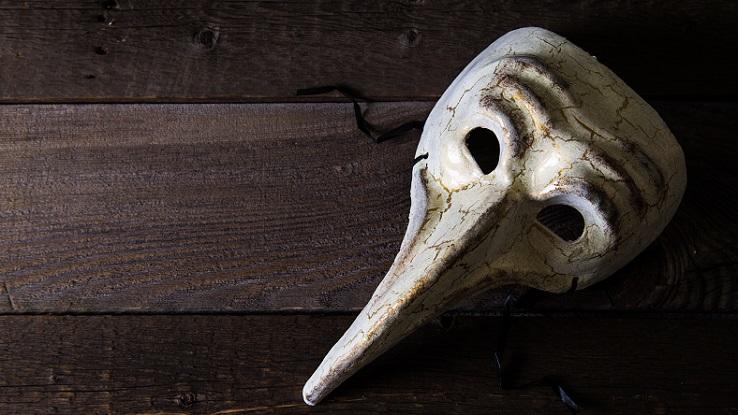
In October of 1347, a fleet of trade ships descended on Sicily, Italy. They came bearing many coveted goods, but they also brought rats, fleas and humans who were unknowingly infected with the extremely contagious and deadly bubonic plague.
The disease that eventually became known as the Black Death — victims’ flesh and skin died and turned black — spread like wildfire across Europe, eventually claiming the lives of a third of the population in just a few short years. This tragedy had a huge impact on life then and now. Take a look at some of the strange consequences that prove how bad the Black Death really was.
England Moved Away from Catholicism
So many Catholic clergymen died as a result of the Black Death (also known as the Black Plague and the Great Plague) that the entire structure of the religion in England was threatened. Historians believe there was an especially large death toll among this group because priests administered last rites to the dying and then lived together in monasteries where germs easily spread from person to person.

The widespread death of holy men also caused people to question their religion. The Catholic Church only presented the Bible in Latin at the time. British Bible scholars around that time were translating the Bible into English, the language of the common people, but it wasn’t complete. Between a lack of priests and the unanswered questions, the Catholic Church declined in popularity in England after the Black Plague.
People Beat Themselves in City Squares
The Flagellants comprised a pseudo-religious movement that sprang up from the Black Death. Many people believed the plague was God’s way of punishing mankind for being sinful. The Flagellants punished themselves mercilessly in hopes of making up for the general community’s sins.

They were rich men who traveled from city to city, found the most public area possible and then flogged themselves. They beat themselves bloody with leather straps that were somewhere between a huge belt and a whip. Each of the flogging instruments also had bits of metal attached to make the self-imposed punishment extra painful.
Some Employees Became Prisoners
So many people died because of the Black Plague that common workers were in extreme demand. Right before the disease started to spread, more people were moving to towns and villages to pursue new job opportunities that didn’t exist when most people simply owned their own farms.

The job market was so great that employees sometimes abruptly quit jobs for other jobs that paid more — much as they would today. With the workforce so diminished, harsh laws were put in place to prevent this practice, and it became legally acceptable for business owners to hold employees in stocks and makeshift jail cells at night to keep them from leaving for other jobs.
Travel Was Extremely Restricted
The Black Death often spread to new cities by travelers who were unknowingly infected. A new person would arrive in town and then die a few days later. Within a few weeks, the town would be fighting a full-blown epidemic. It took time, but many historians credit the plague with leading humans to implement the concept of quarantine.

In the 1370s, some of the same Italian cities that had been hit hard by the Black Death years earlier started to see signs of another epidemic. They passed a law that placed travelers in quarantine for 30 days or more to make sure they were not infected before interacting with locals. Sometimes ships would sail into ports with the majority of the crew already dead. Talk about a ghost ship!
Trade Was Banned
Obviously, the Black Death put a serious damper on business. Just before the tragedy, technological advances and urbanization were happening at a rapid rate. Trade was rightly blamed for part of the reason the disease spread so quickly, so towns, governments and the clergy started to restrict trade.

Some Italian ports shut down altogether. Others allowed ships to dock, but everyone on the ship had to stay on board for 30 days before they were allowed to go into town. Trade came to a screeching halt in some areas due to bans on imported items implemented by the clergy and local governments.
System of Modern Employment Was Born
Before the Black Death, society was divided into the wealthy and the poor. The economy in much of Europe, especially England, was based on a feudal system where landowners were lords and workers were serfs. The serfs lived and worked on the land, they had very few personal rights and they stayed in perpetual debt to the landowners.

Because so many workers died, very few landowners had enough serfs to remain solvent after the plague. Additionally, former serfs with skills began to work for themselves and received wages, rather than food or land, for their work. The same system of employment by choice is still in place today.
Population Growth Was Stunted for Almost 200 Years
The Black Plague only raged at its worst for two or three years, but so many people died in that short time span that it took decades for the European population to get back to pre-plague numbers. Although babies continued to be born, the population was still lower than it was before.

It took six generations for Europe’s population to return to where it was before the fall of 1347. Considering the significantly shorter lifespans in Medieval Europe, you could think of a generation as lasting about 30 years. Do the math, and it took 180 years to replace the number of people who died in the plague with new citizens.
No More Sticking to the Status Quo
The Black Plague is largely seen as a negative event, of course, but the clouds had a bit of a silver lining for those who survived. So many common laborers died that the ones who were left alive had more bargaining power when it came to their wages. People simply refused to work unless they were compensated fairly.

The wealthy were very much affected by the plague, as their income was closely tied to international trade and the land being worked by laborers. Common people got a huge economic boost because they could suddenly earn higher wages. People who began their lives doomed to always be at the bottom of the totem pole suddenly had the chance to make a name for themselves.
Things Got Pretty Spooky
Death may be a part of life, but it’s still pretty unnatural for people to see dead bodies on a regular basis. During the Black Death, there were mass open graves everywhere. This took a huge mental toll on survivors, and many creative types responded by incorporating death into their writing and artwork. Medieval literature became very morbid.

After the plague, there was a marked shift in thinking and creativity toward death and the afterlife. Dance of Death is a famous drawing from that time that shows skeletons dancing around. People began to wonder about the immortality of the soul, and skeletons became a pop culture symbol.
Anti-Semitism Received a Boost
It’s a sad fact that humans tend to look for someone to blame when tragedy strikes. Many people blamed God for the Black Plague, but others blamed Jewish people. After the plague, Jews became the object of hatred all across Europe. In some areas, they were even persecuted.

Why were the Jews targeted? Judaism includes several hygiene standards that helped protect the Jewish population from the plague. Additionally, many Jewish communities lived separately from the rest of the population. Because Jews didn’t die as often from the plague, it was easy for panicked people to believe they had caused it. Mainz, Aragon and Barcelona are just a few of the cities where townspeople viciously blamed and murdered all the Jewish people.
Doctors Almost Became Extinct
Doctors died from the Black Death more often than the rest of the population. Doctors were on the front lines of the fight against the deadly disease, so many of them were the first ones to die. Although some doctors practiced based on a limited knowledge of anatomy, many so-called doctors treated patients with remedies that had no medical basis.

Doctors had more exposure to the disease than the rest of the population, so you can imagine how often the ones died who believed they were treating the plague using “medicines” that were totally ineffective. The fledgling medical industry was still archaic at this point, and it was made worse when the little knowledge that existed died along with so many doctors.
The Black Death Struck More Than Once
The Black Death was so horrible that many people don’t realize it wasn’t the only bubonic plague epidemic. This time period wasn’t the first time humans had been infected by this painful, deadly disease. In previous years, outbreaks had occurred in China, Mongolia and even parts of Europe.
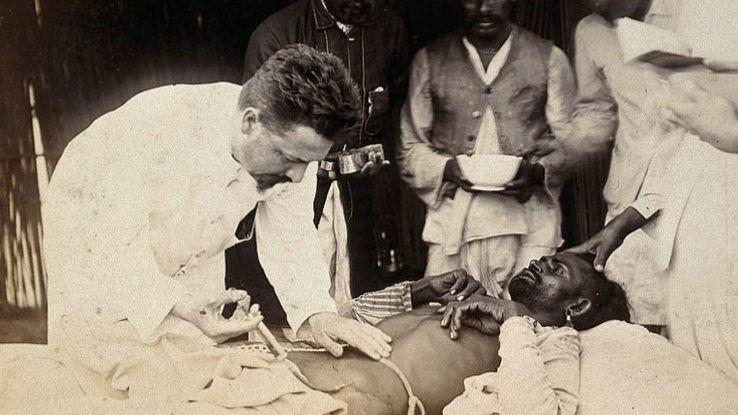
There have also been major outbreaks of the bubonic plague since the Middle Ages, even in modern terms. Fortunately, all the other outbreaks were contained to smaller geographical areas and had much smaller death tolls, so they pale in comparison to the catastrophic Black Death. This photo shows survivors of another plague epidemic in a makeshift hospital.
All Social Classes Took a Hit
Many of the diseases that affected people in the 1300s were far more deadly for the poor than they were for the rich. The reasons were simple. Poor people often lived in overcrowded and dirty urban centers where disease could spread easily, while the rich usually lived on less crowded rural estates.
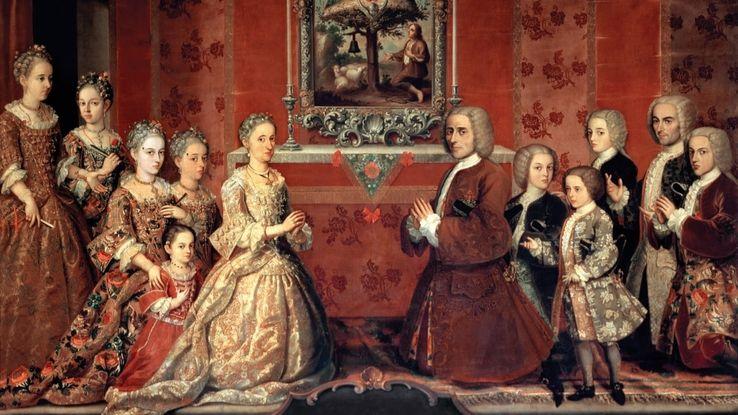
The wealthy could also afford medical care, while the poor often had to deal with medical issues on their own. Despite these socioeconomic differences, the wealthy died just as often as the poor during the Black Plague. The disease quickly took lives in both rural areas and urban centers.
People Left Their Families to Die
Of all the trauma associated with the Black Plague, the largest toll was taken on the mental health of survivors. The Black Plague was so terrifying and deadly that it caused people to break their moral, social and familial ties in ways they never thought they would.

In medieval society, the family was extremely important, but first-person accounts show that some people left their beloved family members to die alone rather than risk contracting the bubonic plague themselves. In some cities, doctors and clergymen, who were looked to for leadership and help, abandoned their posts. People who stayed to help their family members usually ended up dying themselves after witnessing the painful deaths of their family members.
The Average Lifespan Increased
Although the Black Plague decreased the population, it inadvertently increased the lifespan of survivors. The Medieval time period is known for early deaths and squalid living conditions. Because there were much fewer people left alive after the epidemic, wages increased, and food and housing were plentiful.

For one of the first times in several centuries, the generation of people that survived the plague started to live past their middle ages. More people had adequate shelter and plenty of food, including meat, to eat on a daily basis, so they lived longer. Current generations are still benefitting genetically from the uptick in overall health and lifespan during this time period.
Detailed Anatomy Textbooks Were Written
Dissection of deceased humans was very controversial before the plague. Religious beliefs promoted the idea that a person’s afterlife could be compromised if their body wasn’t handled properly. Pope Boniface VIII banned cadaver dissections, which made it illegal in most of Europe.
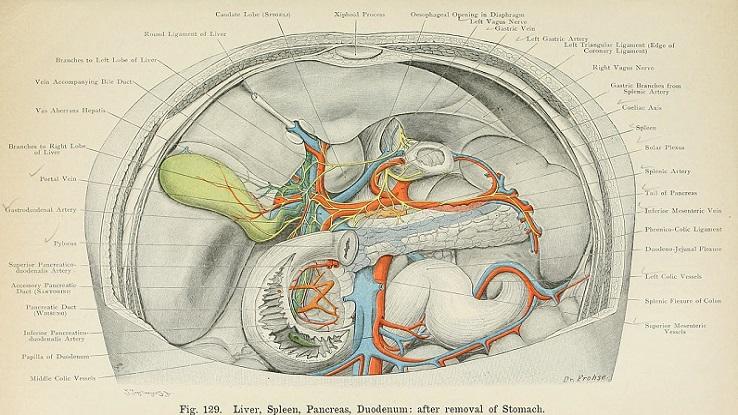
During the Black Death, Pope Clement VI made it legal to dissect human bodies. He hoped that studying the bodies would help doctors find a cure for the plague. Additionally, many of the religious customs surrounding death had already been abandoned because there weren’t enough priests to deal with the mass deaths. The knowledge of human anatomy discovered during this time laid the cornerstone for the knowledge available today.
Fewer Saints Were Recognized
The Catholic Church had a huge effect on law, life and religion during the time of the Black Plague. Today, people who have a big social or scientific impact receive Nobel Prizes, but in the Middle Ages, people were given sainthood for incredible achievements.
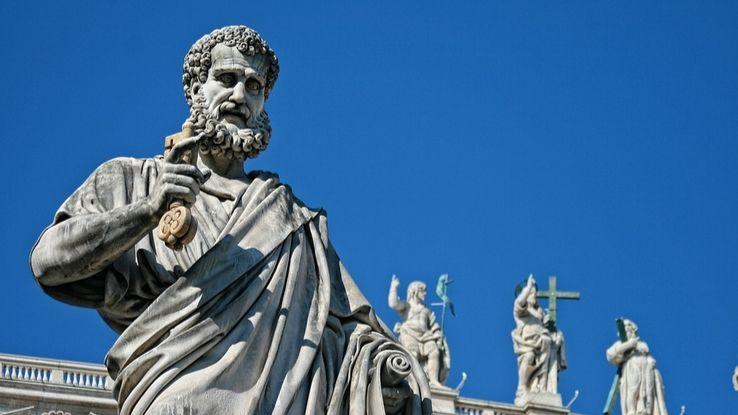
During the plague, very few new saints were introduced. For one thing, Pope Clement VI is well known for completely secluding himself for a lengthy period of quarantine and prayer to avoid catching the bubonic plague himself. The appointment of new saints was a very regular and important part of life at the time, but it all but stopped while the plague tore through Europe.
Unfinished Buildings Still Exist
Society was bustling, growing and starting to look promising (historically speaking) just before the Black Death devastated Europe. Society was still highly focused on agriculture, but new practices and inventions were making life easier. Literature, education, culture and art had all started to expand exponentially.

It all came to a screeching halt because people were either dead or trying to keep themselves from dying. The Duomo di Siena, or Siena Cathedral, in Italy has an unfinished addition to the cathedral that greatly exemplifies the impact of the bubonic plague on expression. Construction stopped when most of the workers died and was never resumed. Today, the unfinished architectural gem is a popular tourist destination.
Music Almost Stopped
Although such intricate details of ancient life are difficult to corroborate from the scant historical documents that are available, there is a supported belief that the overall growth of music was stunted by the Black Plague. Songs during this dark period of human history were extremely dismal.

Instead of the silly and jovial music that was popular before the plague, music became somber and slow. In many places, it almost became extinct. The ability to sing and play music were skills that many people didn’t have, so when the bubonic plague claimed so many lives, it also wiped out generations’ worth of musical talent.
Launch of a Mini Inquisition
Tragedies often bring out the worst in people. Very little was known about contagious diseases at the time, and people in many towns and villages were eager to blame someone or something for the Black Death. Some people were so determined that Jews were to blame that Inquisition-like conditions began to exist in parts of Europe.

An ugly rumor spread that Jews had intentionally caused the disease, and Jewish people were rounded up and tortured into making false confessions about causing the plague. Under extreme duress, many of them “admitted” to poisoning local bodies of water with some fake substance that caused the plague. After such admissions, they were viciously killed anyway.
Fragrances Blossomed to Cover the Stench
The Black Plague gave the cologne and perfume industries a big boost. Some doctors even spread the idea that odors could keep the plague away. For this reason, taking a bath — already not a common daily practice — was seen as a way of making yourself susceptible to the plague, which made bathing even less common.

Although some doctor’s also spread the idea that natural fragrances, such as herbs and flowers, helped spread the plague, there were other doctors who taught that good smells could fight the plague. Due to the overwhelming stench of death and the idea that good smells could help, perfumes and colognes became popular. Some people even filled their pockets with flowers.
Wool Shortages Lasted for Decades
The Black Plague was even more deadly for animals than it was for humans. Humans of that time period didn’t follow modern standards of cleanliness, so you can just imagine how dirty the conditions were for animals. Bites from fleas and rats were two ways the plague was spread, and the animals were typically riddled with fleas.

So many sheep died as a result of the Black Plague that there was a wool shortage throughout Europe. It took decades for the sheep population in Europe to grow back to a level where enough wool could be harvested to support the human population.
The Birth of Reliable Science
Prior to the Black Death, alchemy was thought to be a legitimate science. Many people believed in magic and believed that all bad things happened as a result of God’s disfavor. None of those ideas worked to stop the plague from spreading.
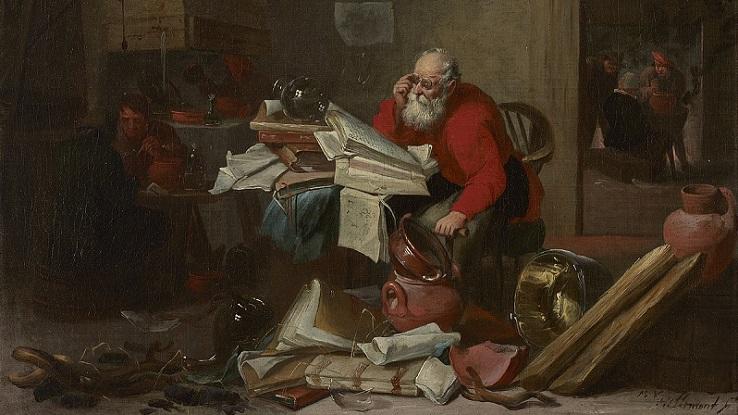
Although things happened gradually over time, the plague helped structure science as we know it today. Scientific communities began to challenge each other to prove their ideas, and the scientific method eventually gained popularity. People wanted answers, and they were determined to find them in ways that could be proven. Due to these early scientific advancements, effective treatment for the Black Death was discovered centuries later.
Religion Became More Personal
Prior to the Black Plague, religion was very austere. God was thought of as harsh and only interested in crime and punishment. Many plague survivors blamed God and religion for all the suffering they had witnessed, but it spurred some people to ask questions about religion.

Many non-Catholic religious movements were born as a result of the plague. The Bible was translated into common languages, and the friendlier side of God’s personality was explored. The idea that God helps people through trials and tribulations, rather than always causing them, became popular. Some of the religions and religious ideas that appeared in the post-plague period are still around today.
More People Starved Than Ever Before
For one of the first times in history, public health initiatives started to happen as a result of the plague. Quarantines, travel bans and restrictions on trade were just a few of the measures that kings, local leaders and clergymen implemented to protect their cities from the Black Death.

People were usually fined for not complying with these rules. In many cases, it was beyond the power of the authorities who imposed the rules to enforce them. At other times, the rules only led to food shortages and hunger, which made people weaker and more susceptible to the plague.
Riots Took Place All Over Europe
After the Black Plague, the social hierarchy was turned on its head. Previously poor people could afford land and housing, due to a shortage of workers allowing them to demand higher wages. Rich people often couldn’t afford to keep their many acres of land because they didn’t have enough living workers to cultivate it all.

Just as the poor were rising in economic status, lawmakers started to introduce laws that capped wages. These laws resulted in a lot of tension between the rich and the rising poor, and there were riots in some European cities. Most of the socioeconomic riots happened in England.
An Unexpected Boost to the Environment
Prior to the Black Death, European economies and populations were both booming. Trade ships couldn’t be built fast enough, and huge amounts of lumber were needed for new buildings. Deforestation in Germany and some parts of the Mediterranean region had already been happening for hundreds of years.

Due to the lack of surviving workers and travel and trade restrictions, the plague temporarily paused many of the previously bustling businesses. This gave the forests enough time to start growing back. Who knows how bad the current ecosystems of Europe would be if the rampant deforestation had continued unchecked?
Women Were Banished in Some African Towns
Christianity wasn’t the only religion that believed the Black Plague was a punishment from God. Due to Africa’s close proximity to Europe, the plague also affected Northern Africa. In Cairo, Egyptian women were blamed and persecuted for the plague, just as Jews were in Europe.

One religious leader of the time spread the idea that Allah was punishing the people for sexual sins. Women in some towns were essentially banished from society because people believed more sins would take place if they were allowed to associate with men. This shows how much of an impact the Black Plague had on worldwide culture.
Wars Stopped (Temporarily)
The Black Death happened right in the middle of the Hundred Years War between France and England. Both countries were seriously impacted by the disease, and they were forced to stop the bitter battle for six years. Neither country had enough soldiers, weapons or money to keep up the fight.

A few years after the epidemic stopped (the plague continued in Europe for several centuries on a smaller scale), the incredibly long war started again. Although the plague killed millions itself, it probably saved some lives due to the ceasefire.
People Grew Stronger as a Whole
The Black Death killed most of the people it infected, and it was extremely contagious. People who didn’t contract it, despite the extremely poor infection control measures at the time, had extremely strong immune systems. People who were old, sick, malnourished, very young and had weakened immune systems died from the plague at higher rates than healthier people.

The plague essentially left behind a group of people with very strong immune systems, and those are the people who populated the world for future generations. Humans today have better immunity to certain diseases because they are descendants of Black Death survivors.






